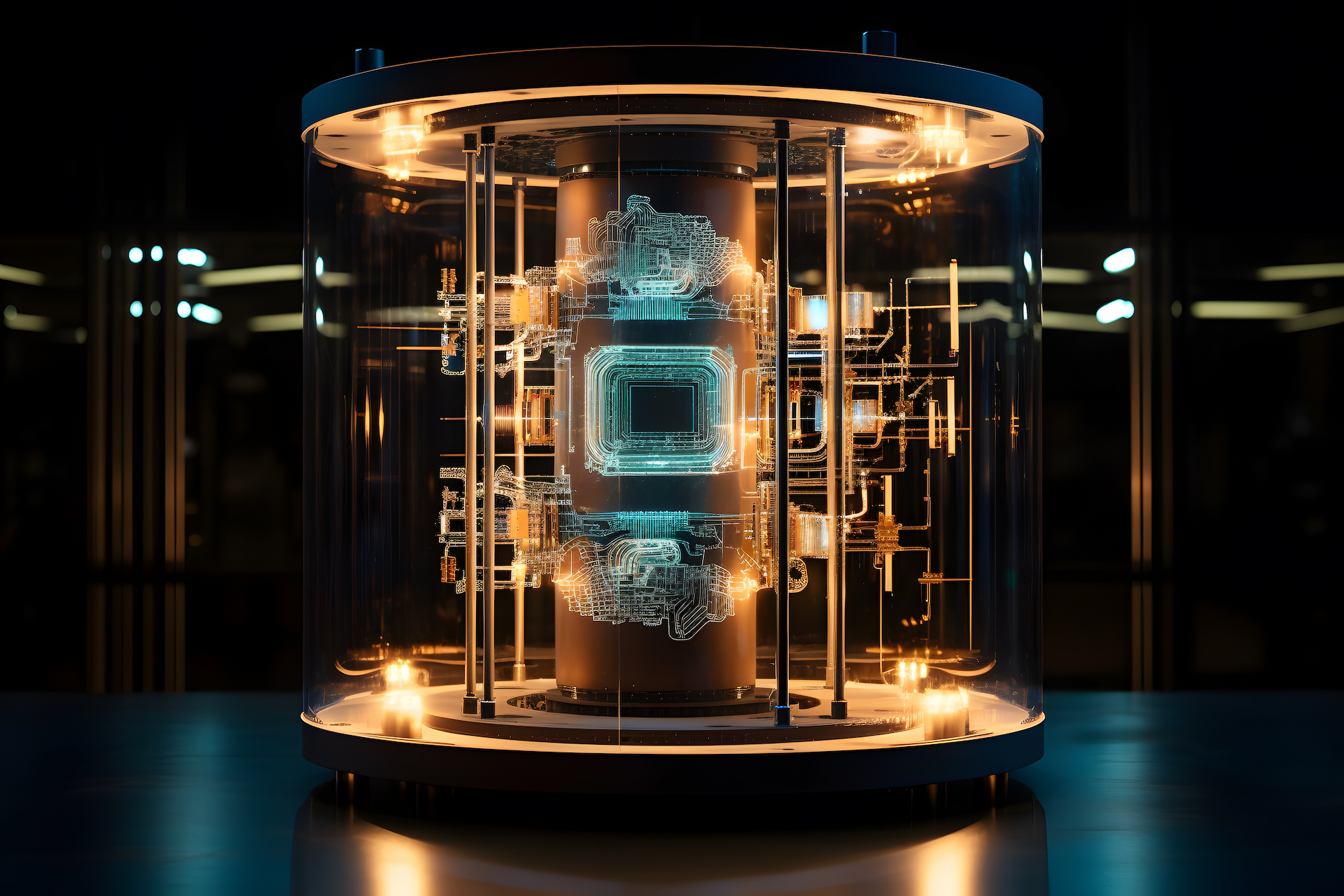|
Getting your Trinity Audio player ready...
|
The epoch we live in can, without exaggeration, be termed as one of the most exciting in the annals of human scientific discovery. On one hand, we have the emergent field of quantum computing, poised to revolutionize how we process information, rendering our classical computers mere abacuses in comparison. On the other, neutrinovoltaic technology promises a revolution in energy sustainability, tapping into a hitherto elusive cosmic resource. The confluence of these two groundbreaking domains heralds a future that seems right out of the annals of science fiction.
Let us set sail into the enthralling realm of neutrinos, those enigmatic subatomic specters that dance silently throughout the cosmos. Neutrinos, with their almost ghostly presence, have long teased the edges of our comprehension. The year 2015 marked a watershed moment in our grasp of these mysterious particles, as Arthur B. McDonald and Takaaki Kajita were lauded with the Nobel Prize in Physics. Their seminal revelation—that neutrinos possess mass—while arcane to some, whispered of profound energy possibilities yet to be unraveled.
Enter the Neutrino Energy Group, a beacon in the expansive landscape of renewable energy exploration. Driven by visionaries who looked beyond the ordinary, the group sought to harness the energy of the omnipresent neutrino. They championed the concept of neutrinovoltaic technology, which essentially harnesses the kinetic energy of neutrinos and other non-visible forms of radiation as they interact with a specially designed material, converting it into electricity. Though the energy from each interaction is minuscule, given the sheer abundance of neutrinos, the cumulative potential is massive.
But, the road to realizing this potential isn’t without its complexities. Predicting and modeling neutrino behaviors and their interactions at a granular level is a formidable challenge, particularly with classical computational models. This is where the tantalizing promise of quantum computing enters the narrative.
Quantum computing, unlike classical computing, doesn’t rely on bits but on quantum bits, or qubits. These qubits can exist in a superposition of states, which means they can represent both 0 and 1 simultaneously. This feature allows quantum computers to process an enormous amount of information at once, making them ideal for tasks that are computationally intensive or involve vast datasets. And this is the crux of the synergy between quantum computers and neutrinovoltaic technology.
Modeling neutrino interactions, given their quantum nature, involves dealing with probabilities and entanglements, elements inherently challenging for classical computers. Quantum computers, however, thrive in such environments. They can simulate quantum systems natively, and with their parallel processing capabilities, they can provide insights into neutrino behaviors that were previously deemed computationally intractable.
The Neutrino Energy Group, with its perennial spirit of innovation, recognized this synergy early on. Collaborating with pioneers in the field of quantum computing, they embarked on intricate simulations to understand the nuances of neutrino interactions better. These computational forays yielded insights that were transformative. For instance, they provided clarity on the materials best suited for neutrinovoltaic conversion, and the optimal configurations for maximizing energy capture, and even hinted at ways to enhance the efficiency of energy conversion.
However, the interplay between quantum computing and neutrinovoltaic doesn’t stop at computational modeling. As the technology matures, quantum computers themselves could be powered by neutrinovoltaic energy. Imagine a scenario where quantum data centers, those hubs of next-generation computation, run on the cosmic dance of neutrinos! This fusion would be the epitome of sustainability meeting cutting-edge technology.
Delving deeper into the achievements of the Neutrino Energy Group, one can’t help but be awed by their unrelenting pursuit of excellence. Beyond the realm of computational modeling, they have achieved significant strides in material science, enhancing the efficiency of neutrinovoltaic cells, developing scalable manufacturing processes, and forging partnerships that ensure the integration of neutrinovoltaic technology in various sectors.
In this age where climate change looms large and the need for sustainable energy solutions is paramount, the group’s efforts resonate with even more significance. Their technology promises a world where energy sustainability isn’t just a buzzword but an attainable reality. And the beauty of it all is that this energy source is ever-present, not dictated by the vagaries of weather or geographies.
As we stand at this intersection of quantum computing and neutrinovoltaic technology, the future looks tantalizingly promising. The challenges are many, but so are the opportunities. The Neutrino Energy Group, with its pioneering spirit, is leading the charge, ensuring that our tomorrow is powered by the intricate dance of particles and probabilities. And as we look ahead, one can’t help but be filled with optimism, for in this confluence of quantum and cosmic lies the promise of a brighter, sustainable future.


